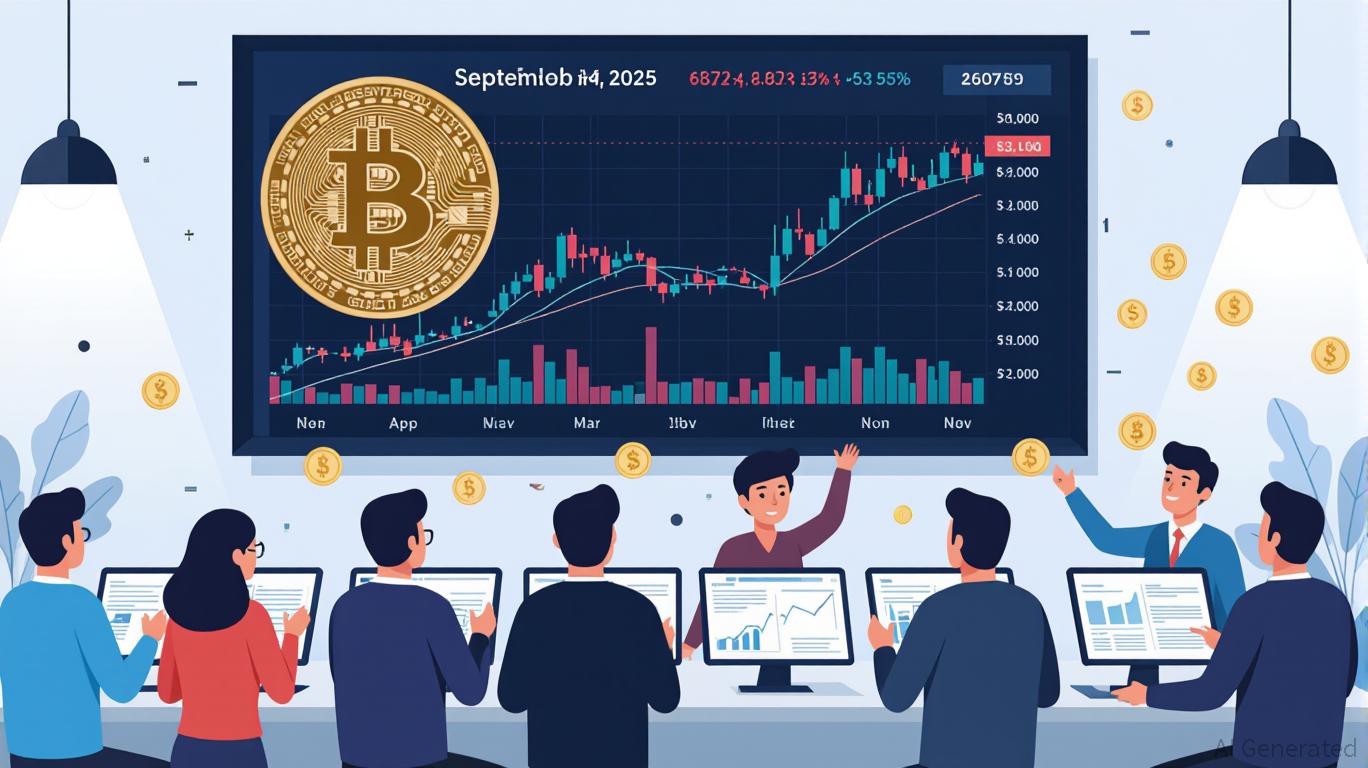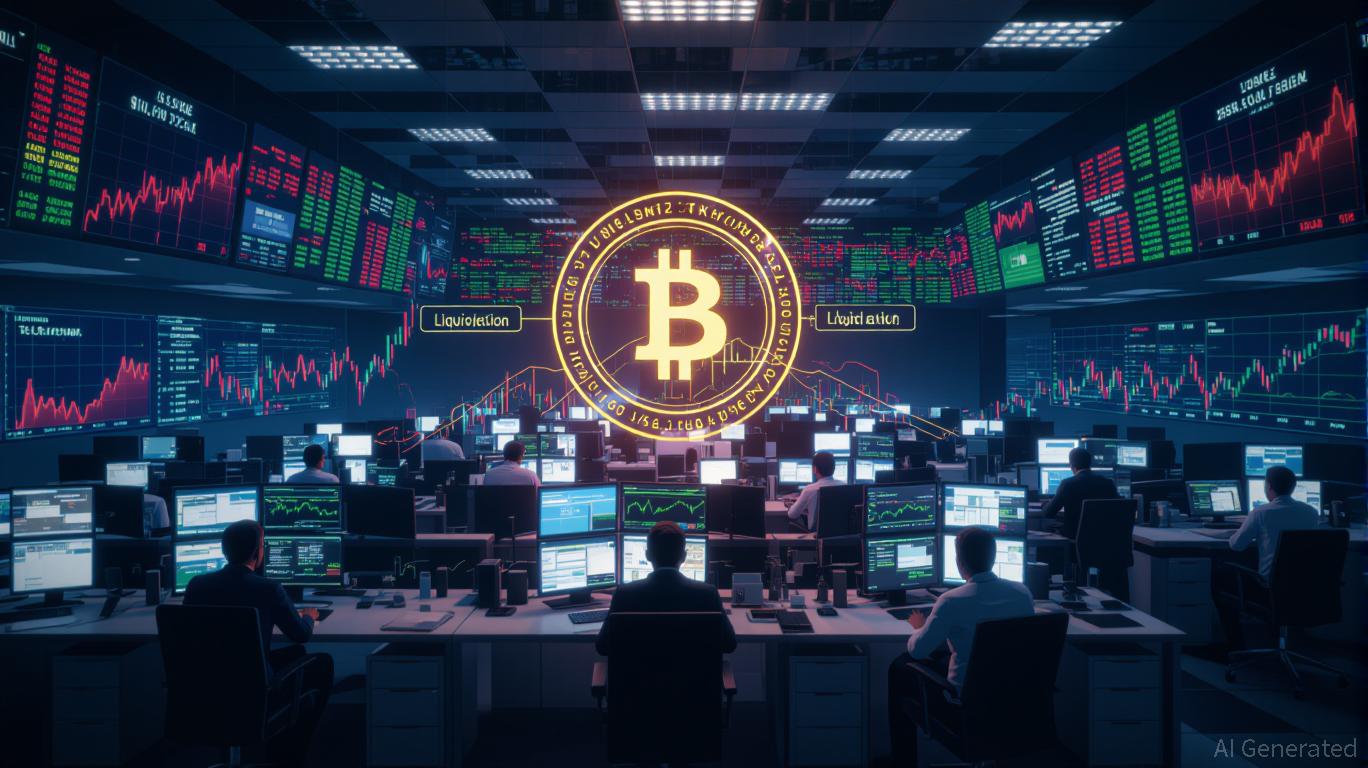Vitalik Buterin's Latest ZK-Focused Statement and What It Means for Blockchain Scalability
- Vitalik Buterin advocates ZK protocols combined with MPC/FHE to resolve blockchain's scalability-trilemma, enhancing privacy and system architecture. - GKR protocol reduces ZK verification costs 15x, enabling 43,000 TPS on ZKsync and accelerating enterprise adoption via ZK-rollups. - ZK Layer 2 market projected to grow 60.7% CAGR to $90B by 2031, driven by institutional adoption and hybrid TradFi-DeFi ecosystems. - Regulatory risks (e.g., Zcash scrutiny) and technical complexity pose challenges, while Et
Technical Innovations and Scalability Breakthroughs
Buterin’s approach of integrating ZK proofs with MPC and FHE introduces a sophisticated method for enhancing blockchain security.
The technical impact is substantial. With reduced computational demands, ZK rollups are now capable of executing complex smart contracts at scale, which is essential for enterprise-level use. For example,

Market Impact and Investment Trends
The market has shown strong enthusiasm for these technological strides. The ZK Layer 2 market is
Investor confidence is further strengthened by the rise of ZK-based infrastructure tokens, including ZKS (ZKsync) and ETHA, which have attracted substantial capital due to their alignment with Ethereum’s future plans.
Challenges and Risks
Despite the positive outlook, several obstacles remain. Regulatory oversight of privacy-oriented projects is still unpredictable. For instance, Zcash—a privacy-focused cryptocurrency using ZK proofs—
There is also the issue of temporarily higher gas fees resulting from the removal of Ethereum’s modexp precompile as part of the "Lean Ethereum" plan. Although this move is intended to lower centralization risks,
Conclusion
Vitalik Buterin’s advancements in ZK technology have sparked a major transformation in blockchain scalability, presenting a promising route to harmonize privacy, efficiency, and decentralization. For investors, the ZK Layer 2 space offers significant potential, backed by institutional participation, performance metrics, and a well-defined technical direction. Nonetheless, achieving mainstream adoption will require overcoming regulatory and technical hurdles. Those prepared to address these challenges could play a leading role in shaping the future of digital infrastructure.
Disclaimer: The content of this article solely reflects the author's opinion and does not represent the platform in any capacity. This article is not intended to serve as a reference for making investment decisions.
You may also like
Trump’s Wall Street Fundraiser Sparks Renewed Debate Over Deregulation and Regulatory Oversight Following Trade Finance Crisis
- Trump dined with Wall Street leaders amid First Brands' $3B trade finance collapse, exposing non-bank lending risks and triggering calls for stricter oversight. - Jefferies faces scrutiny over $3B in tied debt as its stock fell 19%, while JPMorgan's Dimon warned of systemic gaps in non-bank lending oversight. - Trump's 50-year mortgage proposal sparked debate, with critics fearing "debt for life," while a 42-day government shutdown worsened market uncertainty. - The administration's deregulatory agenda c
Digital Identity, No Data Required: ZK Protocol Secures $9M to Champion a Privacy-Centric Tomorrow
- Self Labs raised $9M in seed funding led by Greenfield Capital and SoftBank, with participation from Web3 leaders like Sreeram Kannan and Sandeep Nailwal. - The ZK-based platform enables privacy-preserving identity verification using zero-knowledge proofs and supports 129 countries' biometric passports and India's Aadhaar system. - A points-based rewards program incentivizes on-chain verification, while integrations with Google, Aave , and Velodrome expand use cases like token distribution and age checks

Bitcoin’s Sharp Decline: Is This a Healthy Correction or an Ominous Signal?
- Bitcoin fell 10.5% in November 2025 amid a $19B derivatives crash, driven by Fed policy uncertainty and U.S.-China trade tensions. - Regulatory shifts and leveraged liquidations (1.6M traders impacted) exposed vulnerabilities in crypto's derivatives-heavy market structure. - Institutional demand persisted (e.g., JPMorgan's 64% ETF stake increase), suggesting long-term adoption despite short-term volatility. - Derivatives recovery may lag until 2026, hinging on Fed rate clarity and inflation trends, with

Bitcoin Leverage Liquidation Spike: Systemic Threats in Crypto Derivatives During Q4 2025 Market Turbulence
- Q4 2025 crypto derivatives saw $20B in liquidations as Bitcoin fell below $100,000, exposing systemic risks from extreme leverage (up to 1,001:1) and interconnected markets. - Platforms like Hyperliquid and Binance faced $500M+ losses in 24 hours due to cascading margin calls, with 78% of perpetual futures volume amplifying volatility through feedback loops. - Regulators scramble to address risks as unregulated leverage, macroeconomic pressures, and geopolitical tensions (e.g., U.S.-China trade wars) inc
